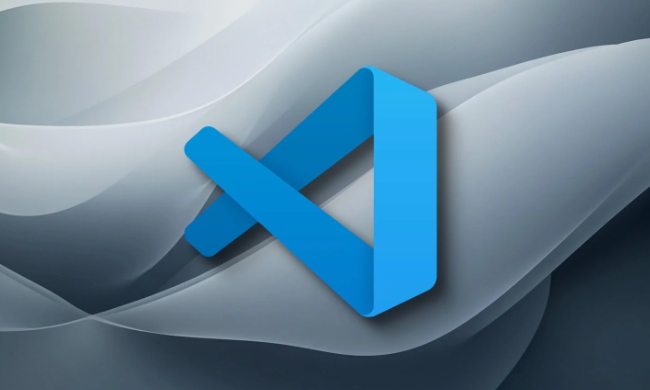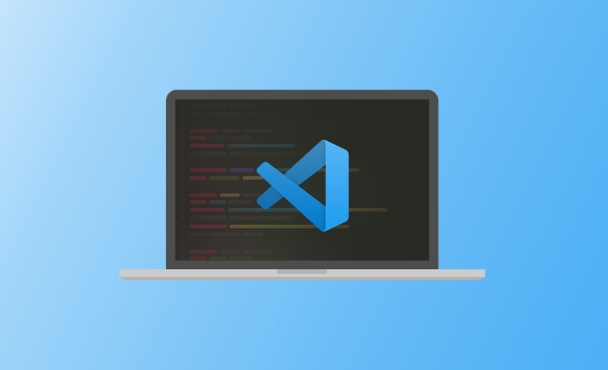VS Code is a lightweight, cross-platform code editor with IDE-like features via extensions, ideal for web and open-source development; 2. Visual Studio is a full-featured, Windows-only IDE designed for complex .NET, C , and enterprise applications; 3. VS Code performs faster on lower-end machines and supports a wide range of languages through extensions, while Visual Studio offers built-in comprehensive tools but requires more system resources; 4. Choose VS Code for lightweight, flexible editing across platforms, and Visual Studio for robust, integrated development of large-scale Windows or enterprise projects; many developers use both depending on project needs.

The main difference between VS Code and Visual Studio lies in their size, purpose, and target use cases—despite both being developed by Microsoft and having "Visual" in the name.

1. Type of Tool: Lightweight Editor vs Full IDE
- VS Code (Visual Studio Code) is a lightweight, open-source code editor that runs on your desktop. It supports many programming languages through extensions and is highly customizable.
- Visual Studio is a full-featured Integrated Development Environment (IDE). It's much larger in size and packed with built-in tools for debugging, testing, profiling, UI design, and more.
Think of it this way:
- VS Code = Fast, flexible editor with IDE-like features via plugins.
- Visual Studio = Heavy-duty development suite designed for complex projects.
2. Performance and System Requirements
- VS Code starts quickly, uses less memory, and works well even on lower-end machines. It’s great for web development, scripting, or working with lightweight frameworks.
- Visual Studio is resource-intensive. It requires a powerful machine (especially for large .NET or C projects) and takes longer to launch.
For example:

- Opening a JavaScript/Node.js project? VS Code is usually faster and simpler.
- Building a Windows desktop app with WPF or a large enterprise .NET solution? Visual Studio is the better fit.
3. Supported Platforms and Languages
| Feature | VS Code | Visual Studio |
|---|---|---|
| Cross-platform | ? Windows, macOS, Linux | ? Windows only (macOS has Visual Studio for Mac, but it's different) |
| Language Focus | JavaScript, Python, HTML, CSS, TypeScript, Go, etc. | C#, VB.NET, F#, C , .NET Framework/Core |
| Extensibility | Huge marketplace of extensions | Extensions available, but core features are built-in |
VS Code shines in web development, cloud, and open-source projects.
Visual Studio excels in enterprise .NET development, Windows apps, and game dev (with Unity or Unreal).
4. Use Cases: When to Use Which?
-
Use VS Code if you:

- Work with web technologies (React, Node.js, etc.)
- Want a fast, minimal editor
- Develop on macOS or Linux
- Like using command-line tools alongside your editor
- Prefer lightweight setups with only the extensions you need
-
Use Visual Studio if you:
- Build complex .NET or C applications
- Need advanced debugging, performance profiling, or UI designers
- Work on large enterprise solutions
- Develop Windows desktop or UWP apps
- Want everything integrated out of the box
Bottom Line
- VS Code is like a Swiss Army knife—small, versatile, and extendable.
- Visual Studio is like a fully equipped workshop—powerful, comprehensive, but takes up space.
Many developers actually use both, depending on the project. For example, use VS Code for scripting or frontend work, and switch to Visual Studio for backend .NET services.
Basically, it comes down to what you're building and how much tooling you need.
The above is the detailed content of What is the difference between VSCode and Visual Studio. For more information, please follow other related articles on the PHP Chinese website!

Hot AI Tools

Undress AI Tool
Undress images for free

Undresser.AI Undress
AI-powered app for creating realistic nude photos

AI Clothes Remover
Online AI tool for removing clothes from photos.

Clothoff.io
AI clothes remover

Video Face Swap
Swap faces in any video effortlessly with our completely free AI face swap tool!

Hot Article

Hot Tools

Notepad++7.3.1
Easy-to-use and free code editor

SublimeText3 Chinese version
Chinese version, very easy to use

Zend Studio 13.0.1
Powerful PHP integrated development environment

Dreamweaver CS6
Visual web development tools

SublimeText3 Mac version
God-level code editing software (SublimeText3)

Hot Topics
 Laravel environment construction and basic configuration (Windows/Mac/Linux)
Apr 30, 2025 pm 02:27 PM
Laravel environment construction and basic configuration (Windows/Mac/Linux)
Apr 30, 2025 pm 02:27 PM
The steps to build a Laravel environment on different operating systems are as follows: 1.Windows: Use XAMPP to install PHP and Composer, configure environment variables, and install Laravel. 2.Mac: Use Homebrew to install PHP and Composer and install Laravel. 3.Linux: Use Ubuntu to update the system, install PHP and Composer, and install Laravel. The specific commands and paths of each system are different, but the core steps are consistent to ensure the smooth construction of the Laravel development environment.
 Use VSCode to perform version fallback operation of code
May 15, 2025 pm 09:42 PM
Use VSCode to perform version fallback operation of code
May 15, 2025 pm 09:42 PM
In VSCode, you can use Git for code version fallback. 1. Use gitreset--hardHEAD~1 to fall back to the previous version. 2. Use gitreset--hard to fall back to a specific commit. 3. Use gitrevert to safely fall back without changing history.
 Environment configuration for running Ruby code in VSCode
May 15, 2025 pm 09:30 PM
Environment configuration for running Ruby code in VSCode
May 15, 2025 pm 09:30 PM
Configuring the Ruby development environment in VSCode requires the following steps: 1. Install Ruby: Download and install from the official website or using RubyInstaller. 2. Install the plug-in: Install CodeRunner and Ruby plug-ins in VSCode. 3. Set up the debugging environment: Install the DebuggerforRuby plug-in and create a launch.json file in the .vscode folder for configuration. This way, you can write, run, and debug Ruby code efficiently in VSCode.
 How to manually install plugin packages in VSCode
May 15, 2025 pm 09:33 PM
How to manually install plugin packages in VSCode
May 15, 2025 pm 09:33 PM
The steps to manually install the plug-in package in VSCode are: 1. Download the .vsix file of the plug-in; 2. Open VSCode and press Ctrl Shift P (Windows/Linux) or Cmd Shift P (Mac) to call up the command panel; 3. Enter and select Extensions:InstallfromVSIX..., then select .vsix file and install. Manually installing plug-ins provides a flexible way to install, especially when the network is restricted or the plug-in market is unavailable, but attention needs to be paid to file security and possible dependencies.
 Configure VSCode and GitHub for code synchronization
May 20, 2025 pm 06:33 PM
Configure VSCode and GitHub for code synchronization
May 20, 2025 pm 06:33 PM
Configuring VSCode to synchronize code with GitHub can improve development efficiency and team collaboration. First, install the "GitHubPullRequestsandIssues" and "GitLens" plugins; second, configure the GitHub account; then clone or create a repository; finally, submit and push the code to GitHub.
 Best Practices for Writing JavaScript Code with VSCode
May 15, 2025 pm 09:45 PM
Best Practices for Writing JavaScript Code with VSCode
May 15, 2025 pm 09:45 PM
Best practices for writing JavaScript code in VSCode include: 1) Install Prettier, ESLint, and JavaScript (ES6) codesnippets extensions, 2) Configure launch.json files for debugging, and 3) Use modern JavaScript features and optimization loops to improve performance. With these settings and tricks, you can develop JavaScript code more efficiently in VSCode.
 Experience in participating in VSCode offline technology exchange activities
May 29, 2025 pm 10:00 PM
Experience in participating in VSCode offline technology exchange activities
May 29, 2025 pm 10:00 PM
I have a lot of experience in participating in VSCode offline technology exchange activities, and my main gains include sharing of plug-in development, practical demonstrations and communication with other developers. 1. Sharing of plug-in development: I learned how to use VSCode's plug-in API to improve development efficiency, such as automatic formatting and static analysis plug-ins. 2. Practical demonstration: I learned how to use VSCode for remote development and realized its flexibility and scalability. 3. Communicate with developers: I have obtained skills to optimize VSCode startup speed, such as reducing the number of plug-ins loaded at startup and managing the plug-in loading order. In short, this event has benefited me a lot and I highly recommend those who are interested in VSCode to participate.
 Solve the coding settings and garbled problems of VSCode when dealing with multilingual projects
May 22, 2025 pm 10:57 PM
Solve the coding settings and garbled problems of VSCode when dealing with multilingual projects
May 22, 2025 pm 10:57 PM
VSCode solves the problems of multilingual project coding and garbled code including: 1. Ensure that the file is saved with correct encoding and use the "redetection encoding" function; 2. Set the file encoding to UTF-8 and automatically detect the encoding; 3. Control whether to add BOM; 4. Use the "EncodingConverter" plug-in to convert encoding; 5. Use the multiple workspace functions to set encoding for different sub-projects; 6. Optimize performance and ignore unnecessary file monitoring. Through these steps, the coding problem of multilingual projects can be effectively dealt with.






